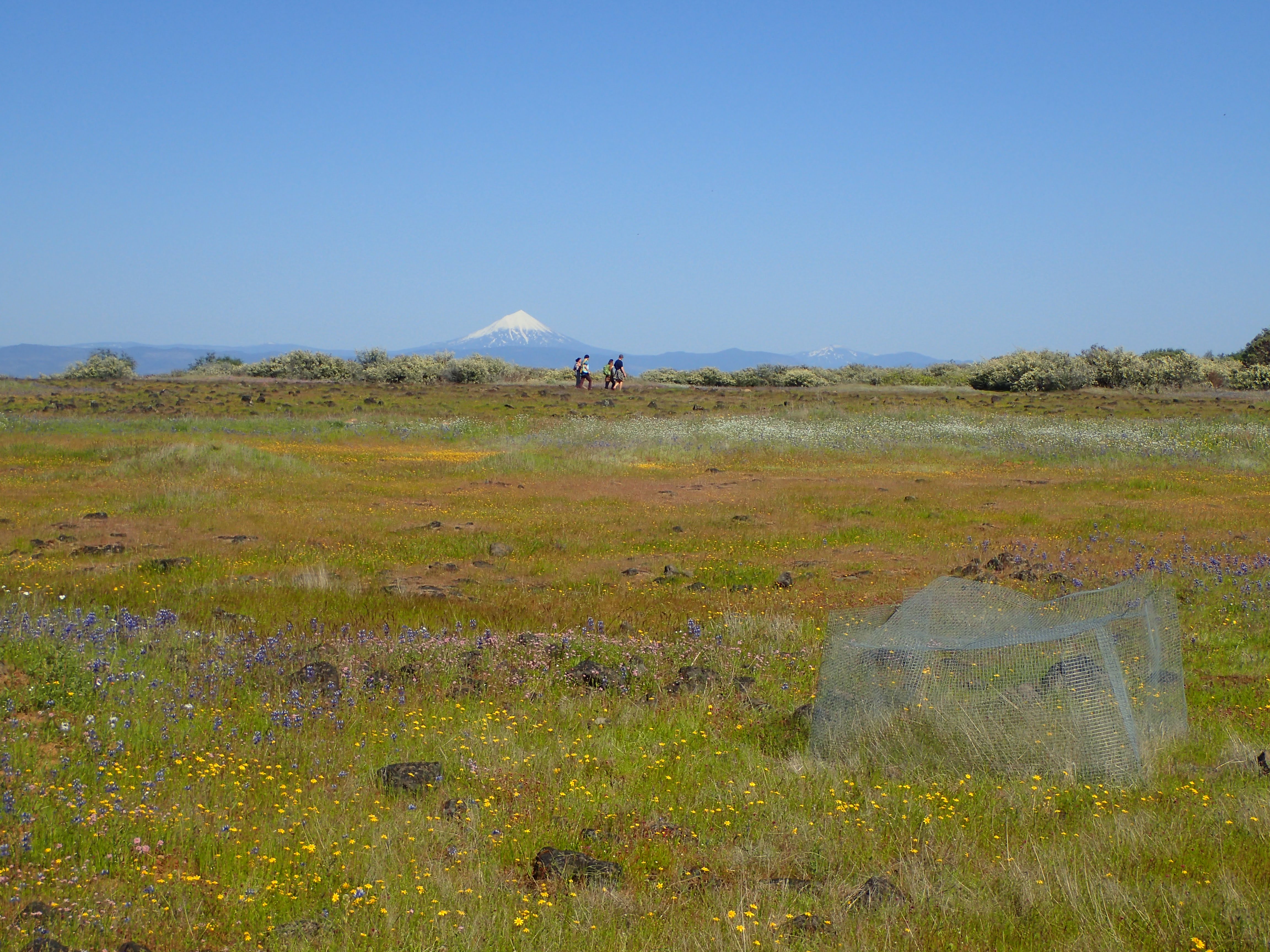
Tramplers, Stumblers and Rollers: Observations from our first 2 weeks as interns
By Samantha Hooper and Mary McKean
May 1, 2018
The first two weeks of Conservation Research field work were an immersion in the spectacularly interconnected landscape of Oregon’s native and exotic plant life. We joined Andrew from IAE’s Habitat Restoration team at the West Eugene Wetlands for our first field day, where we mulched a field of Kincaid’s Lupine (Lupinus oreganus) seedlings, a native flowering plant that the endangered Fender’s blue butterfly depends upon to lay their eggs each spring. This was the perfect excursion to launch the Conservation Research intern season, as the Kincaid’s lupine quintessentially highlights the imperative role of native plants within a broader web of life. Sweet symbiosis.
We also got to spend a day at the Arkley Farm helping to weed IAE’s native seed production fields. It was impressive to see all of the different species that we currently have in production. It is great to know that this will help ensure that IAE will be able provide quality seed for future restoration efforts!

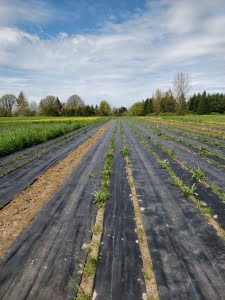
During our second week, the Conservation Research Program crew ventured out into the field near Medford, Oregon, to study the species Limnanthes pumila ssp. pumila also known as Dwarf woolly meadowfoam, endemic to the Upper and Lower Table Rocks. Table Rocks is co-owned by Medford Bureau of Land Management and The Nature Conservancy, and Medford BLM has provided funding for our monitoring efforts. The vernal pools and mounds unique to this site are home to several rare species that fall victim to heavy foot traffic due to the stunning landscape and far-reaching views. The Institute for Applied Ecology has monitored this species for a decade to help determine the effects of human and animal disturbance. We monitor plants that have been protected from grazing with metal exclosures, and also monitor the effects of human trampling in areas of high and moderate human use. It is a very popular location, and there are very few areas with Dwarf woolly meadowfoam that would qualify as “low” human use.
The work IAE has conducted has shown that high human disturbance has a negative effect on dwarf woolly meadowfoam, and the surrounding plant communities found on the shallow soils of the Table Rocks. As a result of our research, the Medford BLM will be installing fencing and establishing more permanent trails to help protect this fragile ecosystem.
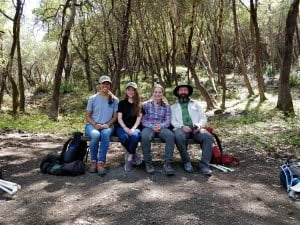
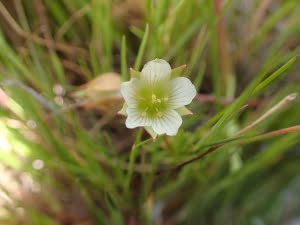
This landscape has had quite the history of land use; from farmers grazing their cattle on the cliff top, daily visits from school children, to airplanes using it as a runway, the dwarf wooly meadowfoam refuses to give up the fight. Even the IAE caged plots have taken some damage. One year, they were completely thrown off the edge of the cliff from what seems to be an angry citizen rebelling against a government conspiracy. It’s also not uncommon to find them battered by apparently large rocks as we collect our data. It’s hypothesized the culprit is testosterone-fueled young men.
Even with all of the various activities effecting the area, it is still a sight to behold, and not hard to understand why it is such a popular destination. In addition to dwarf woolly meadowfoam, we were also lucky to observe many other native wildflowers in bloom. Some of our favorites were: white brodiaea (Triteleia hyancinthina), miniature lupine (Lupinus bicolor), Tolmie star-tulip or cat’s ears (Calochortus tolmiei), rosy plectritis (Plectritis congesta), and cow’s udder (Trifolium depauperatum).
As we spend our days out in the field, curious visitors will often see what we’re up to with all this strange-looking gear. Eating lunch on a rock, careful not to sit on any meadowfoam, we see two women walking towards us. As soon as we’re in ear shot, one of them asks if we’re studying endangered plants, making sure we know they’re usually NOT flower “tramplers”. Immediately after she says that, her friend maneuvering around the rocks, stumbles and rolls down the hill. The woman we were communicating with laughs hysterically and yells over to us: “Although Sally over here loves to roll in them!” Only after she went to check on her friend, did it become obvious they must have been life-long friends. Luckily, Sally was not injured, and had a good laugh at her own expense.

Long days in the field definitely require some relaxation and good fun. Our last night before heading home was spent at the famous Lava Lanes in Medford, Oregon. The crew played Dance Dance Revolution and bowled at a local alley, with the interns whooping score of 49 (Mary) and 28 (Samantha). Clearly we’re better at botanizing.

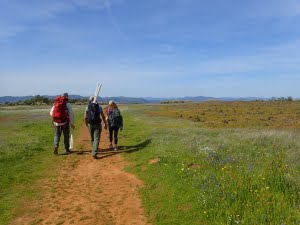
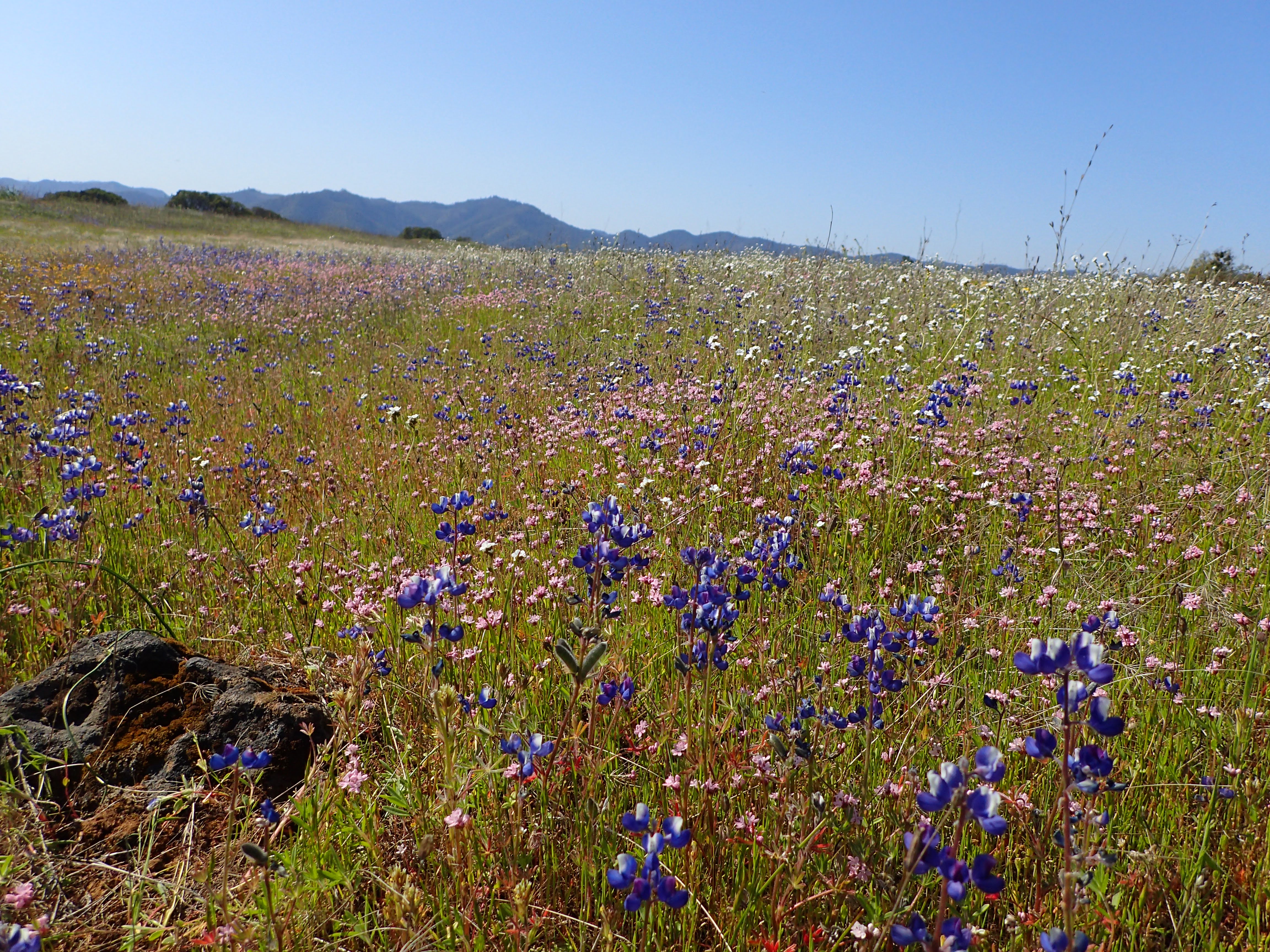
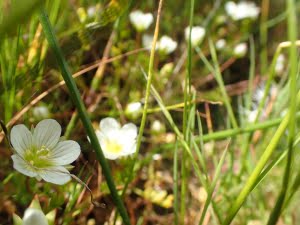
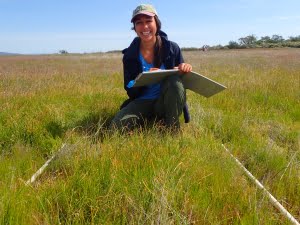
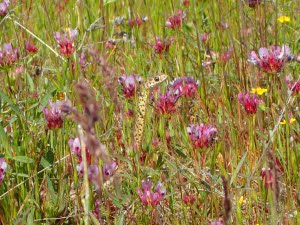

Restoration
Research
Education
Get Involved
Contact
Main Office:
4950 SW Hout Street
Corvallis, OR 97333-9598
541-753-3099
[email protected]
Southwest Office:
1202 Parkway Dr. Suite B
Santa Fe, NM 87507
(505) 490-4910
[email protected]
© 2024 Institute for Applied Ecology | Privacy Policy